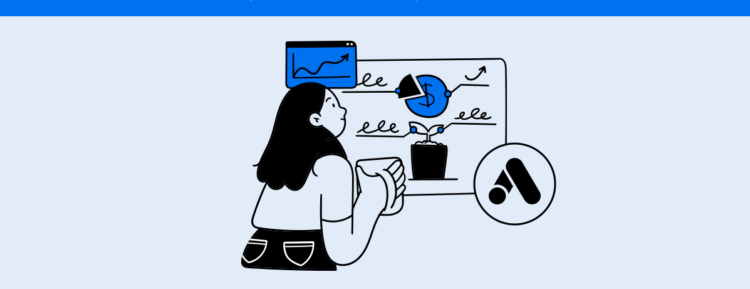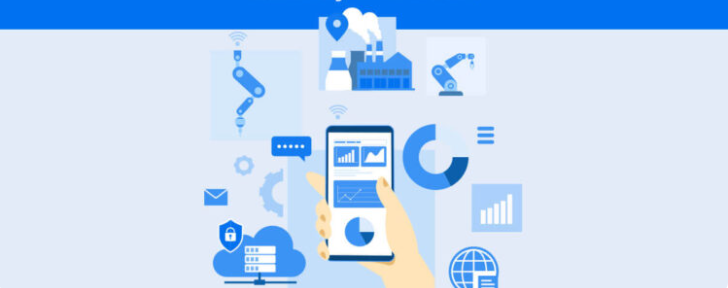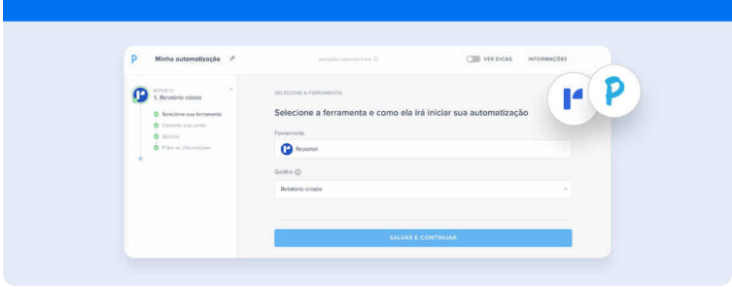Check out paid traffic tips for beginners and learn how to take the first steps to invest in online advertising.
The best techniques of paid traffic for beginners are increasingly sought after by small business owners who want to expand their online presence and boost sales in a competitive market.
Although the concept may seem complex at first, the truth is that with good planning and basic knowledge of digital marketing, anyone can start creating effective campaigns.
That’s why in this guide you will discover how to take the first steps and learn about the main tools to develop your ads. ensuring that every penny invested brings the best possible return. Follow along.
What is paid traffic and what is its importance for companies?
Imagine you have a physical store on a quiet street. No matter how amazing your product is, if few people know it exists, sales are likely to be scarce, right?
In this way, paid traffic works as if you could place a billboard on busy avenues or distribute flyers to people who are more likely to be interested in what you offer, directing them to your store or website.
The big difference is that online, you can do this in an extremely targeted and, above all, measurable way.
That is, for those starting in digital marketing, paid traffic allows for
- Quick visibility unlike organic traffic which depends on factors such as SEO optimization or natural engagement on social networks, paid traffic can place your ad in front of thousands of potential customers in no time.
- Detailed segmentation you can choose to display the ad only to people in a certain age group, geographic location, or even interested in specific topics such as healthy eating or pet accessories.
- Budget control different from placing a billboard on the street and not knowing exactly how many people paid attention, with online advertising you set how much you are willing to spend per day and monitor the results in real-time.
- Measuring results every click, every view, and every conversion can be tracked. Thus, you know which ad generated more sales, which audience had higher engagement, and exactly where your investment brought more return.
In short, for a company that is starting, paid traffic becomes a shortcut to quickly reaching a larger audience.
That is, it increases the chances of sales and brand recognition without needing to wait months to generate organic traction.
Paid traffic for beginners: how to start
If you are researching how to start with paid traffic, you have already taken the first step: seeking information.
The beginning of this journey is usually marked by questions about budget, platforms, and results.
Thus, the best way to move forward is to create a small plan. For this,
- Set clear objectives first ask yourself where you want to go with your actions. That is, if you want to sell more, generate brand recognition, or capture leads, for example. Setting a specific goal facilitates the choice of ad channel and the type of message to be used.
- Know your target audience this will make all the difference when determining which platforms to invest in to ensure an effective return.
- Set an initial budget one of the big fears of beginners is spending all the money quickly. But know that ad platforms allow you to set very modest daily values like R 10 or R 20 for you to test and learn.
Certainly, these are just the first steps of paid traffic for beginners.
But don’t worry. Next, we will address in more detail other aspects that should be considered by those who are starting to invest, such as the choice of platforms, best practices, and measuring results. Let’s go.
Best channels to invest in paid traffic
After defining your objectives and who is the persona of your company or client it’s important to discover to ensure satisfactory results.
There are several options in the digital space that can be chosen. That’s why we’ve selected the most prominent ones below to help in your initial research.
1. Google Ads
One of the best-known paid media channels, Google Ads is ideal for those who want to appear to an audience that is already actively searching for your product or service.
That is, when someone searches for something on Google, like handmade sweets in São Paulo, the ads may appear at the top of the results and help capture that customer who already shows purchase intent.
See an example of a Google Ads ad that appears when someone searches through the platform.

2. Meta Ads
Instagram and Facebook, which are included in the Meta Ads platform, are perfect for targeting by interests and behaviors..
That is, if your business has strong visual appeal, Instagram Ads could be a great choice since it is possible to show images and videos of your products engagingly.
Facebook offers a wide range of users and various ways to segment the audience.
3. LinkedIn Ads
Meanwhile, LinkedIn Ads is more recommended for the B2B market Business to Business) or for those who offer professional services such as consulting and training.
In fact, the segmentation of this channel is very useful if you want to reach executive managers or people working in certain areas.
4. YouTube Ads
If your product or service can be better demonstrated in video, YouTube Ads is an interesting alternative.
Therefore, think of small demonstrations or tutorials, as this format tends to engage those watching related content.
5. TikTok Ads
Finally, on the rise, TikTok Ads is particularly effective if you want to reach a younger audience and if you are willing to create light and fun ads.
After all, the platform is known for high user engagement. However, it is important to adapt the content style to the relaxed language of TikTok.
What is required to start paid traffic campaigns?
After knowing the platforms and choosing the ideal ones for your project, it’s time to gather other fundamental pieces to develop your campaigns. Check what they are.
1. Ad account
Create your accounts on Google Ads or Meta Ads Manager, for example.
These platforms will require company information and billing details, usually a credit card, but you will set the spending cap according to each campaign.
2. Analysis and tracking tools
Set up Google Analytics 4 on your site to monitor how many people will come and what actions they will perform on your pages.
Additionally, on Facebook, activate the pixel to track purchases, subscriptions, or any relevant actions the user may perform.
3. Well-structured landing pages
It’s no use attracting clicks if, upon reaching your page, the visitor finds a confusing site that doesn’t properly explain what you do or has poorly positioned buttons.
Thus, ensure that your page is clear, responsive, and brings a clear call-to-action (CTA).
4. Contents and creatives
Also think about the texts, images, or videos that will make up your ads. That is, try to highlight the value of your product, some differential, or immediate benefit..
After all, attention-grabbing ads usually have some novelty, an irresistible offer, or a solution to the customer’s problem.
Additionally, to make your content more efficient, here are some fundamental tips.
- Create a sense of urgency when making an offer, make it clear that it is available for a limited time or in a restricted quantity. This usually encourages those in doubt to take quicker action.
- Be consistent from the ad to the landing page if your ad promises free shipping, the page should reinforce this point. Any discrepancy reduces user trust.
- Use simple and direct language especially if your audience isn’t familiar with technical terms. Thus, explain concepts lightly and use a natural conversational tone, as if speaking with a friend interested in the topic.
Finally, always perform A/B tests to understand what works with the audience and ensure that your investments always generate the best return.
How to start with a reduced budget
Another big question for those researching paid traffic for beginners is whether you need a lot of money to start. The answer is no.
This is because ad platforms allow you to set a very accessible daily budget, enabling small business owners and digital marketing beginners to test strategies without taking great risks.
Therefore, set a daily amount that is comfortable for you, even if it’s symbolic like R 10 or R 20.
This base is already enough to analyze how the audience reacts, which ads receive more clicks, and what the conversion rate is.
From these initial results, you can adjust the campaigns and creatives to make them more effective.
The most important thing is not to be afraid to make small adjustments, since paid traffic is very dynamic and learning comes precisely from constantly observing the metrics.
Also, to maximize the use of your reduced budget, it is worthwhile to be very specific when defining the audience, as this will bring better quality clicks and increase conversion chances.
How to measure the success of initial campaigns and optimize results
Creating ads is just part of the path in paid traffic for beginners. The other part involves assessing whether they are bringing the desired return.
Therefore, it is essential to regularly monitor the metrics that help understand if your campaigns are on the right track. The main ones are:
- CTR (Click Through Rate) Click Through Rate): is the click rate in relation to the impressions generated by the ad for users. If a lot of people see the ad but few click, maybe the image doesn’t attract attention, or the text isn’t persuasive enough.
- CPC (Cost Per Click) assess how much you are paying on average per click. A high CPC may indicate that your segmentation is too broad, or there is a lot of competition for the purchased keyword.
- CPA (Cost Per Acquisition) shows how much you spend for each completed action, whether it’s a sale, registration, or subscription. This metric is essential to understand if the campaign really pays off or is just spending your budget without generating return.
- Conversion rate even if the visitor clicks on the ad, it’s only worth it if they complete the desired action. Thus, a low conversion rate indicates that there might be issues with the offer or the landing page.
- ROI (Return On Investment) calculate how much you invested and how much you earned thanks to these ads. If the ROI is positive, the strategy is working. However, if it is negative, it’s time to rethink the audience, the language, or even the offered product.
Having said that, it is crucial to analyze these data periodically. Therefore, set aside a moment weekly to check how the campaigns are performing, which ads generate more engagement, and where there is room for improvement.
You might notice that a specific type of ad works better at certain times of the day or that a particular target audience generates more conversions than others, for example.
It is based on these discoveries that you will be able to optimize the campaigns, gradually increase investment in what works best and reduce what doesn’t yield results.
Also, take a look at: How to choose keywords in a paid traffic campaign



